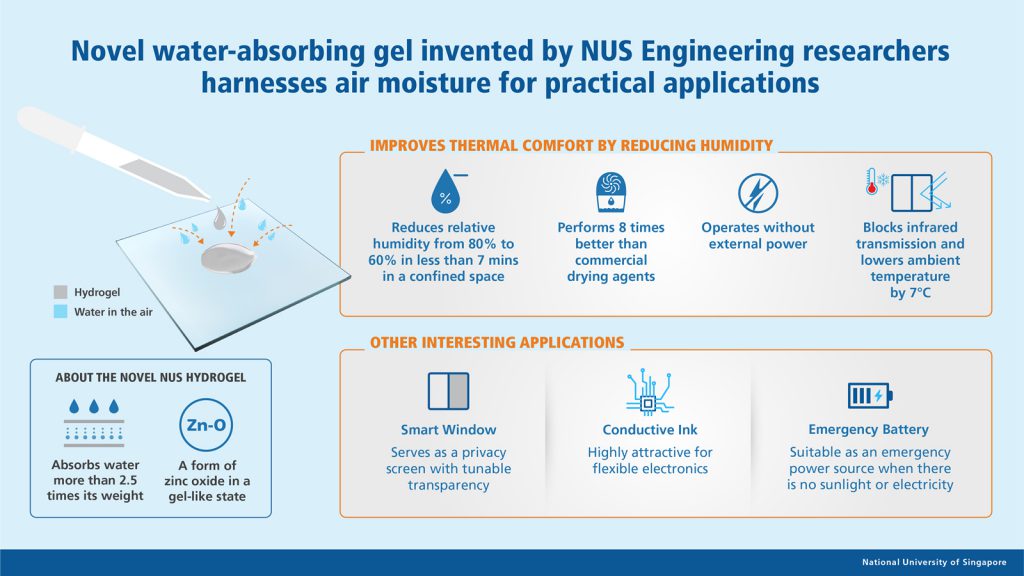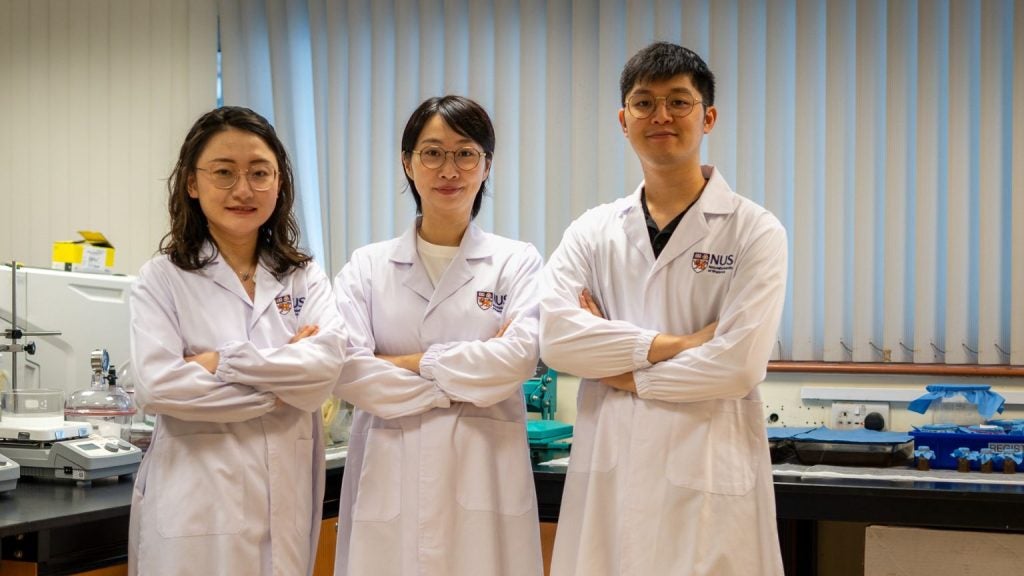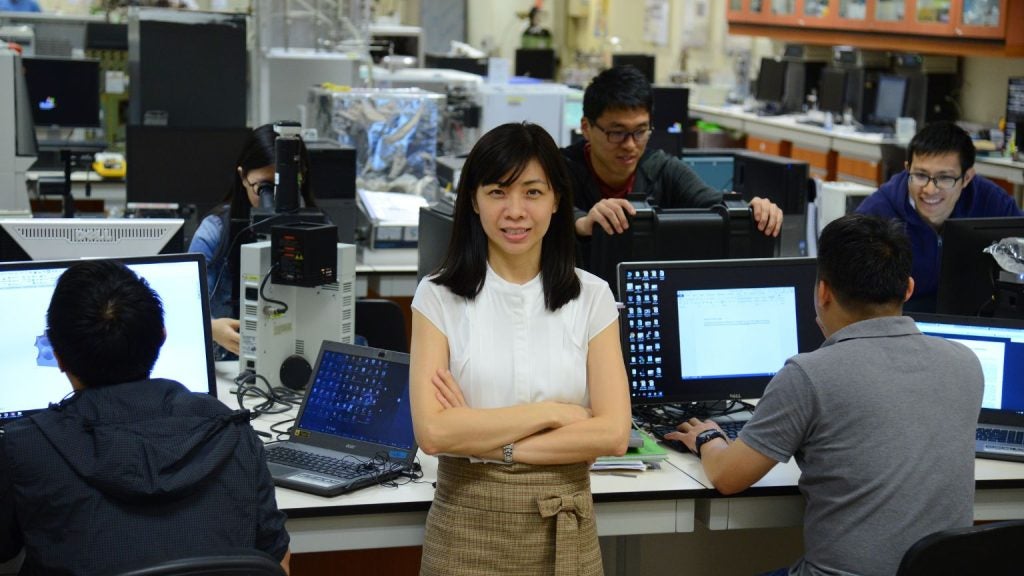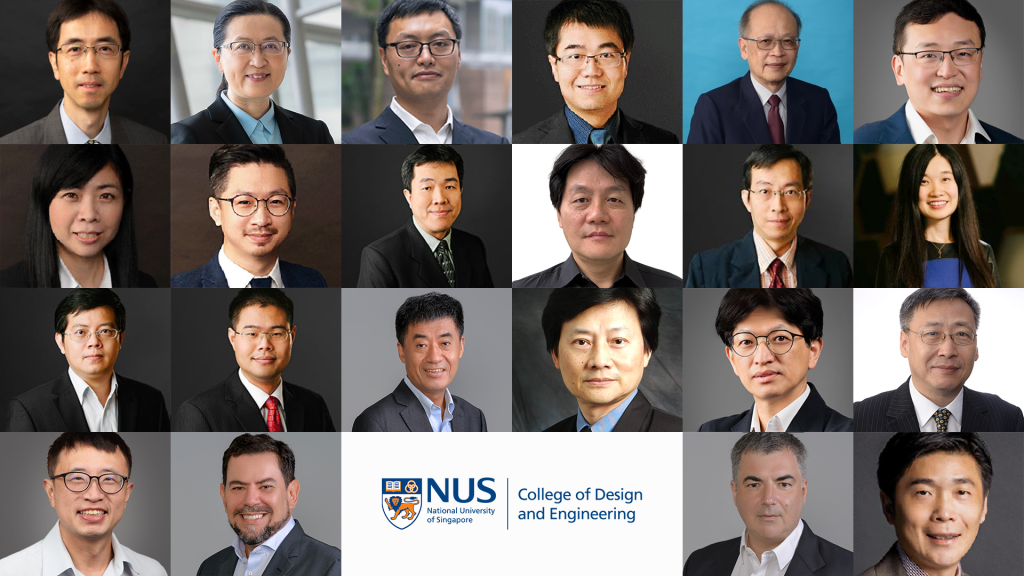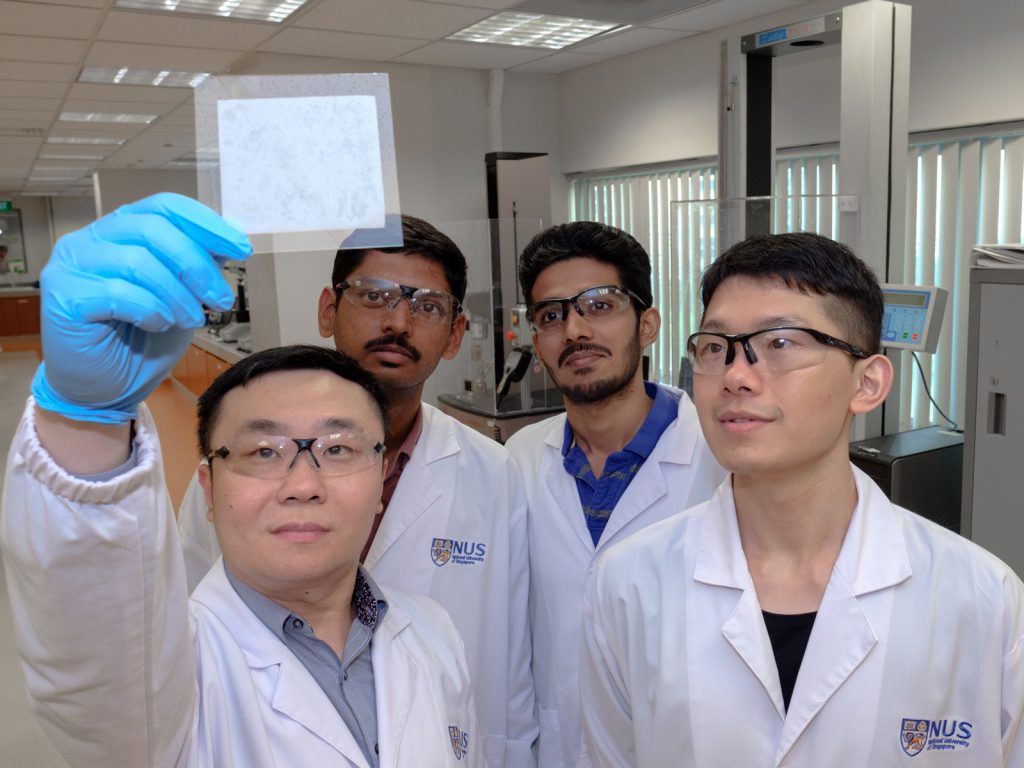
THE water-absorbing gel developed by Asst Prof Tan Swee Ching and his team from NUS Materials Science & Engineering could prevent mouldy walls and make waiting at the bus stops during hot days more comfortable. The hydrogel also harnesses the moisture in the air for a wide range of applications - it could function as a sun or privacy screen, conductive ink and even a battery.
A unique form of zinc oxide (a compound found in sunscreen) that exists in a gel-like state, the hydrogel absorbs water from the surroundings more than 2.5 times its weight and performs at least eight times better than commercial drying agents, such as silica gel. It is suitable for both indoor and outdoor applications, and is also cheap and easy to produce.
"Singapore, like many tropical countries, experience high levels of relative humidity between 70 to 80 per cent. In a humid environment, the air is saturated with water and as a result, sweat on our body evaporates more slowly. This causes us to feel hotter than the actual ambient temperature, leading to great discomfort. Our novel hydrogel aims to achieve a cooling effect by removing moisture from ambient air very efficiently," said Asst Prof Tan.
"Unlike energy-intensive dehumidifying and air-conditioning systems, this hydrogel does not require electricity to operate. It can be easily coated onto walls, windows and even decorative items (such as a sculpture) to perform the dehumidifying function," Asst Prof Tan added.
The material can be used as a smart window material to block heat from sunlight, hence lowering ambient temperatures in enclosed space by more than seven degrees Celsius. As the hydrogel turns from transparent to opaque after taking in water from the environment, it doubles up as a privacy screen.
Another interesting application of the hydrogel is to function as a conductive ink on printed circuit boards commonly found in electronic devices. The gel-like nature of the material makes it highly attractive for flexible electronics. The hydrogel can be erased easily with common solvents such as vinegar, so that the circuit boards could be reused. This would help to reduce electronic waste.
The research team also discovered that the hydrogel can generate about 1.8 volts of electricity - similar to the AA battery - which is sufficient to power devices such as a small digital clock. As such, the material may also be used as an emergency power source in situations where there is no sunlight or electricity supply.
These research findings have been published online in the scientific journal Energy & Environmental Science on 24 May 2018.
The development of the novel hydrogel is supported by NUS and the Singapore Ministry of Education. Following the promising results of using the hydrogel to significantly reduce relative humidity, the NUS Engineering research team, with support from the NUS Industry Liaison Office, has received substantial funding from Temasek Foundation Ecosperity to test this novel application on a larger scale in both indoor and outdoor spaces.
The research team has filed a patent for their invention, and the researchers will conduct more studies to further advance the application of the different properties of the novel hydrogel.
